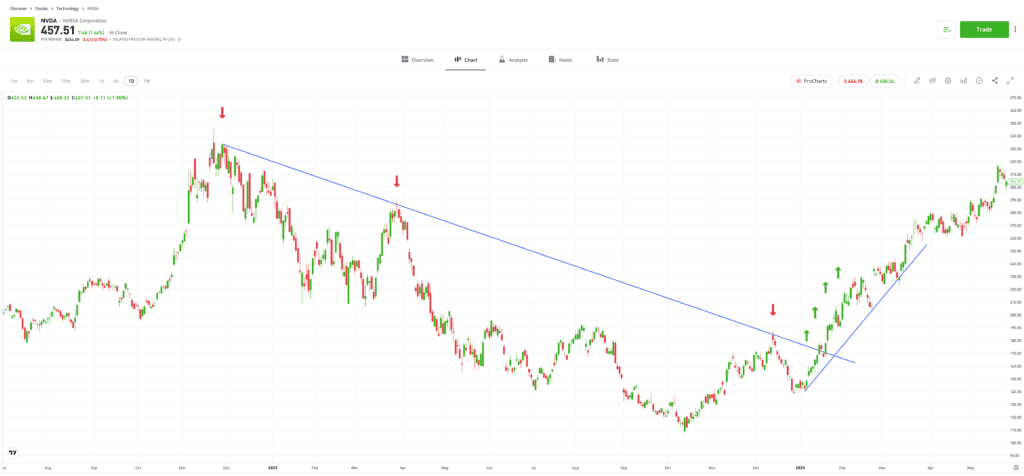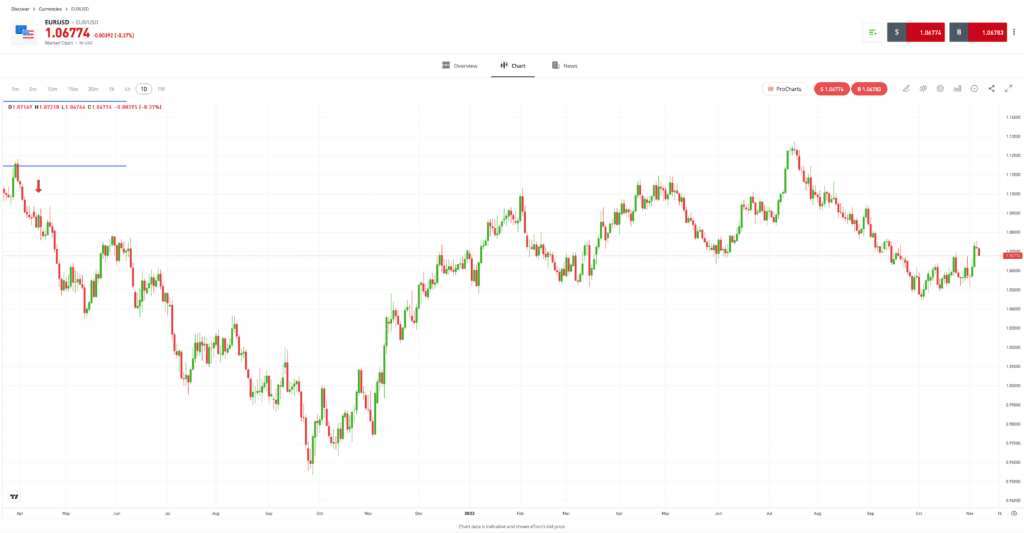Trading Strategies and Technical Indicators help investors make more accurate and informed trading decisions, but utilizing them effectively requires a clear understanding. Learn how to use technical analysis, and how to determine which elements of technical analysis suit your preferred trading strategy.
Building technical analysis indicators into strategies can help you to identify when a market is ranging, trending or about to reverse. This can then allow you to pinpoint trade entry and exit points. The real question, however, is which are the best technical indicators to incorporate into your personal plan?

How to use technical analysis with trading strategies
Technical analysis is an extensive field. It incorporates charting analysis, price patterns and technical indicators. Each approach can offer a guide to future price moves, with the overall aim of developing the skills needed to know which indicators fit in with your strategy and are appropriate for the underlying market conditions.
It is important to approach any situation without a natural bias. If you favor going long in a market, you will almost certainly find some indicators that confirm your “gut feeling.” However, a more neutral approach will reveal a greater number of stronger indicators that might point to price moving down, instead of up.
Tip: If you are biased towards going “long” or “short,” consider finding a market that is trending in that direction.
It is also vital to consider market conditions. If price is moving sideways, then range trading strategies would be more effective than trend-following strategies. This can be challenging for traders who prefer one kind of approach to another.
Tip: Trade the market in front of you. Do not select the wrong strategy, based on a natural bias.
Selecting the right indicators for each strategy
It is believed that you can have more confidence in a decision if a number of different indicators and signals point in the same direction. However, as there are hundreds to choose from, it is important to select the best trade indicators for the current situation and avoid those that might distort your analysis.
Some indicators, such as simple moving averages (SMAs), can act as a guide in both trending and sideways markets. Their simplicity makes them a useful tool in all market conditions.
Bollinger Bands also have the potential to be a reliable guide in both market types. Bollinger Bands can be used to identify changes in price volatility, as well as the range in which price can be expected to trade, making them an ideal option for those trading ranging markets.
Oscillators and stochastics are widely used to spot trend reversals, which can help traders to spot instances during which price will trade within a specific range. However, the ability to spot a reversal can also be used when trend trading and deciding when to lock in profits. Other indicators, such as rising or falling trend lines are also useful guides if you want to follow a trend.
Tip: Choosing the indicators to leave out of your analysis is as important as choosing those to leave in.

Examples of strategies with technical analysis
Using a demo account is one of the best ways to develop the skills required to trade a range of different market conditions. This enables you to use advanced analysis tools to learn how to spot the different setups seen in the market, and trade them in a risk-free environment. You can then review your strategy before implementing it using real funds.
This will also provide you with an opportunity to understand and follow the natural life cycle of a technical analysis strategy and learn ways to incorporate risk management into your approach.
Trend following strategy
Using technical analysis to identify the optimal time to join a trend can involve using stochastics and oscillators to identify when a trend or trend retracement is about to end. Those peaks and troughs in price show the exact moment that price starts to return to follow the direction of the underlying trend. Oscillator and stochastic indicators work well when used in conjunction with trend lines that mark support and resistance levels.
Trendline break strategy
Many experienced traders will have heard the expression: “The trend is your friend, until the bend at the end.” Trend line breaks signal a point at which those following the pattern should consider exiting the position. A reversal in buying and selling activity can also trigger a new trend, but one that heads in the opposite direction.
In the example chart shown below of NVIDIA Corp, you can see a downward trend, followed by a trend line break, which led to the formation of a new, positive trend.

Past performance is not an indication of future results
Source: eToro
Breakout strategy
Breakout strategies look for price movements that signify a change in market conditions. Breakouts can follow periods during which price has been range-bound, or when a trend ends.
Retest long and retest short strategies
When a breakout occurs, inexperienced investors might be tempted to enter into positions immediately. However, there is often a period following a breakout when price returns to revisit the crucial support/resistance level it has just gone through.
The retest strategy involves showing a degree of patience and waiting for price to return to a better entry level, rather than chasing the price as it makes its first move. Retests form an important part of forex technical analysis strategies, as demonstrated by the example below taken from the EURUSD market.

Past performance is not an indication of future results
Source: eToro
Tip: Signals are usually stronger if trading volumes increase at the same time that breakouts, trend line breaks and retests occur.
Why use technical analysis as part of a trading strategy?
The wide range of indicators available, and the way the approach can be applied to any market, and any time frame, allows some traders to rely solely on trading strategies using technical analysis.
That being said, even buy-and-hold investors using fundamental analysis can possibly benefit from using technical indicators to optimize their trade entry and exit points.
Tip: Consider the time of day when implementing a strategy, and be aware of upcoming data releases before investing.

Final thoughts
Using technical analysis trading strategies does not guarantee that trades will be successful. Instead, traders should aim to develop the skills that allow them to improve, rather than perfect, their performance. Consider your win-loss ratio, maximum drawdown, or other metrics that allow you to analyze what you are getting right, and wrong.
Visit the eToro Academy to learn more technical analysis and trading strategies.
Quiz
FAQs
- What part of a candlestick should I use when drawing trendlines?
-
This comes down to personal preference. Some traders prefer to use the ends of shadows, which show the highs and lows of a trading session. Others like to use the ends of the real body of a candle which show the opening or closing price.
- What are the weaknesses of technical analysis?
-
Technical analysis uses historical data, so it generates lagging indicators. The approach also fails to incorporate elements of fundamental analysis, such as economic cycles and upcoming news events. Real-world events, which are impossible to identify from a price chart alone, can act as a catalyst for a price move.
- Which markets should I use technical analysis in?
-
Technical analysis strategies can be used to trade the stock, forex, commodity or cryptocurrency markets. The underlying principles remain the same, which makes it a popular way of trading various asset classes.
This communication is for information and education purposes only and should not be taken as investment advice, a personal recommendation, or an offer of, or solicitation to buy or sell, any financial instruments.
This material has been prepared without taking into account any particular recipient’s investment objectives or financial situation and has not been prepared in accordance with the legal and regulatory requirements to promote independent research. Any references to past or future performance of a financial instrument, index or a packaged investment product are not, and should not be taken as, a reliable indicator of future results.
eToro makes no representation and assumes no liability as to the accuracy or completeness of the content of this publication.


